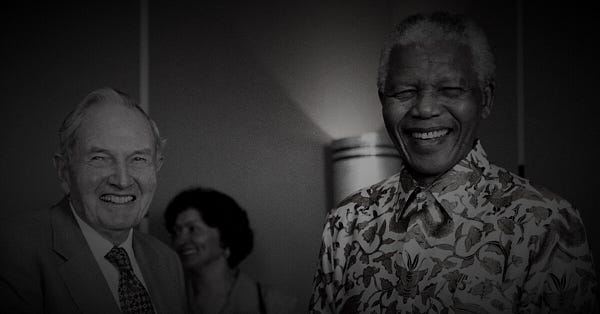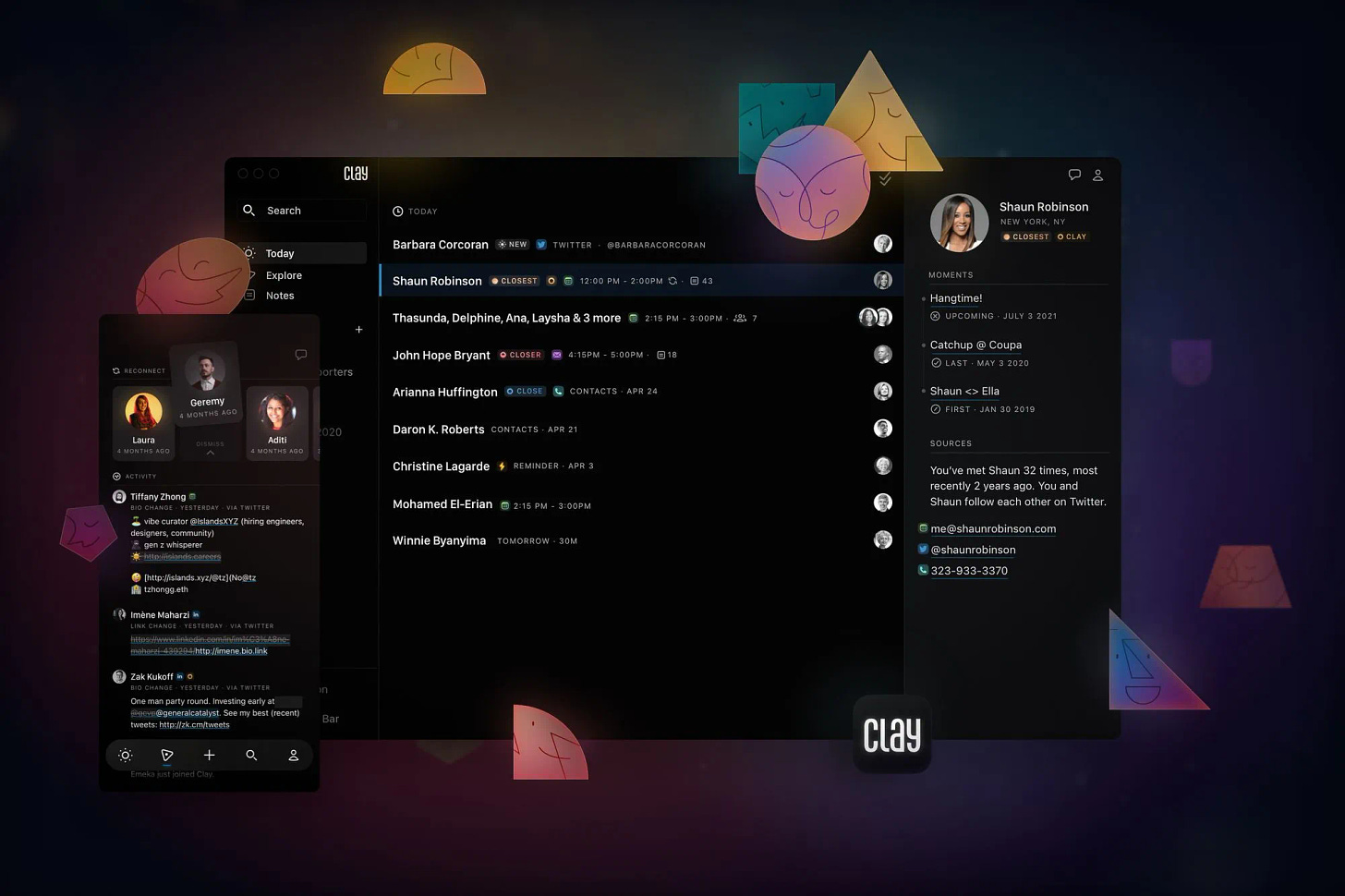Hello Frens 👋,
Welcome back! I am trying to make First 1000 a little bit easier to navigate, so I started a tiny directory to help make sense of everything in the archive. Feel free to check it out here.
This week, I am going much earlier in my coverage than usual. Together we will be looking into Clay: the personal management system.
I was first introduced to Clay by the one and only Mo Amdani from Adapt Ventures. And from the moment I started the beta, I knew this was one of those apps “I didn’t know I needed....until right now.”
Obviously, when I got the chance to interview Matt Achariam & Zach Hamed on their 0→1000 journey with Clay I jumped on it.
Let me preface this issue by saying: I am a big fanboy of Clay, so as always, take everything I say with a grain of salt!
I am super pumped about this one. Let’s get to it!
So what is Clay?
Clay is meant to be the home for your people. It cultivates all your personal relationships in a single, beautiful, intuitive interface. It is a spin on the personal CRM that we were all promised 20 years back, but a spin that actually works.
What makes Clay work— at least for me— (and I have been burnt by half a dozen companies trying to deliver on the same promise) is that:
It’s a single source of truth: Clay can connect to your Calendar, Email, Twitter, iMessage, and even Linkedin to extract a broad spectrum of signals on how you interact with people
It’s Proactive, not Reactive: Clay makes it stupidly easy to see signals from people in your life, as in who changed their job, who is in the news this week or even something as simple as who changed their Twitter bio(personally love that one).
It gets you in the flow: I am in the zone when I am using Clay! Everything is a shortcut away, and Clay is getting better every day at understanding. Just the other week, they pushed an update to auto-generate reminders from notes you write after meeting someone. And it’s these little touches that get me ☺️every. Single.time
I guess the easiest way to describe Clay is a lightweight and magical app that helped me deepen my relationships in ways I did not even know where possible.
Acquiring their First 1000 Customers
Artists, not engineers, built Clay. I could feel it every step along the way. And it is this care, love, and attention to detail they poured into the product that took it from 0→1000 and beyond.
The two levers I want to explore in their go-to-market are:
Storytelling
Building a product people love
1.The lost art of storytelling
As I get closer to my quest to have a better understanding of go-to-market strategies, I am starting to notice a little bit of a trend: many companies, in the very early innings, rally people behind anything but the actual product. (By rallying, I mean get potential customers excited about.)
For some, it may be rallying people behind a common enemy (e.g., Facebook for privacy-first apps, Hey v.s. Apple). It may be a launch party (e.g., Hinge). In the case of Clay, they rallied people behind a story.
The story (or manifesto) they put up in the early days (which is still around today) was around David Rockefeller and his 100,000 index cards.
Many people did not know that David, the patriarch of the third generation of the Rockefeller family until his recent passing, was the black sheep of the family. He was not extroverted and, after coming back from WW2, made it his life mission to be more thoughtful with people.
Over 50 years, he gathered over 100,000 index cards with over 200,000 meticulously crafted notes of every person he had met throughout his life. The purpose of these cards and notes was so that David could become a better person, friend, colleague, boss and establish a deeper, more meaningful relationship with people in his life.
The story crystallized to potential users what Clay wanted to achieve: to make every one of us a little bit more thoughtful in approaching their relationships and adding a little bit of the David Rockefeller glare to our lives.
After Zach and Matt wrote up this beautifully written manifesto of sorts on their website, they pushed it out on Twitter.


The story permeated across the Twitter circles, starting off with Matt and Zach’s close friends and eventually made its way to tens of thousands (maybe even hundreds of thousands I am not entirely sure tbh) of people and a few hundred of those gave in their emails to be the first users of the product.
The lost art of building products
The Rockefeller story was the seed to build early buzz behind Clay. Still, the real magic that kept me and (I presume many people) coming back every day and talking it up every chance I got was the amount of attention to detail, the craftsmanship that went into building this app.
In today’s age, a lot of software feels very transactional and business-minded. Every pixel is optimized to get me to spend a tiny bit more money or spend a little more time on the app.
Clay feels different. When I used Clay for the first time, I remember that light bulb going on after going through onboarding flow (you know the flow that supposedly shows you around the app but everyone furiously presses skips.) It was the first time in a very long time that I took the time to read every single bit of onboarding. It was beautiful.
From that first interaction, I knew Clay was a different bread of apps. It was made by people who cared…a lot! And that energy somehow prevailed through the pixels. I felt the blood, sweat, and tears Matt, Zach, and the team have put into building this.
—
Building a product like this takes time. It took 2.5 years of close iteration with early customers and testers to nail this product down to even the tiniest detail. But it was well worth it!
Having been following the Clay journey for a while now, I witnessed firsthand the building buzz + blow people away with product experience go to market unfold before my eyes, and it was beautiful.
And it is not just the product. You can feel the love and effort they put into everything related, from Marketing emails to product updates. I can’t remember the last time I looked forward to reading product updates emails, but here we are!
Until we meet next week,
Ali Abouelatta



